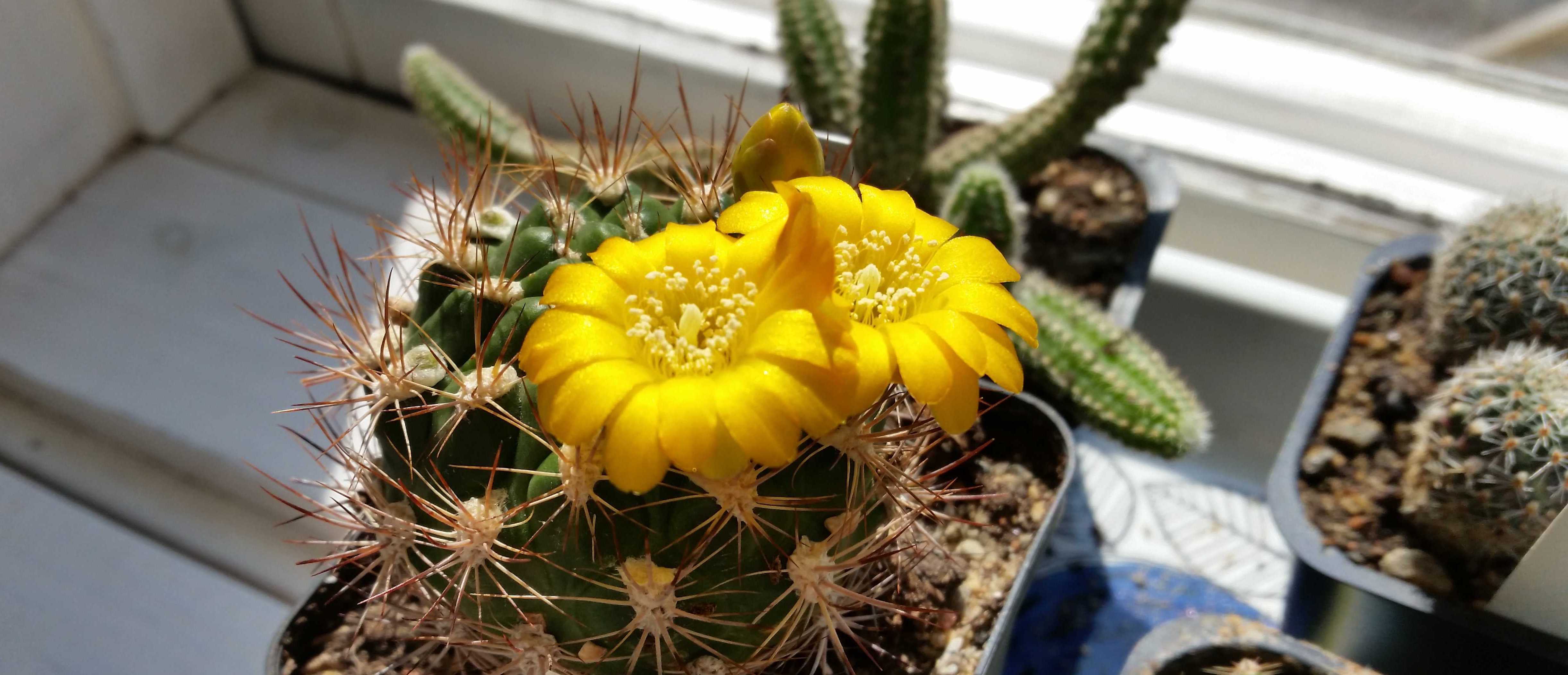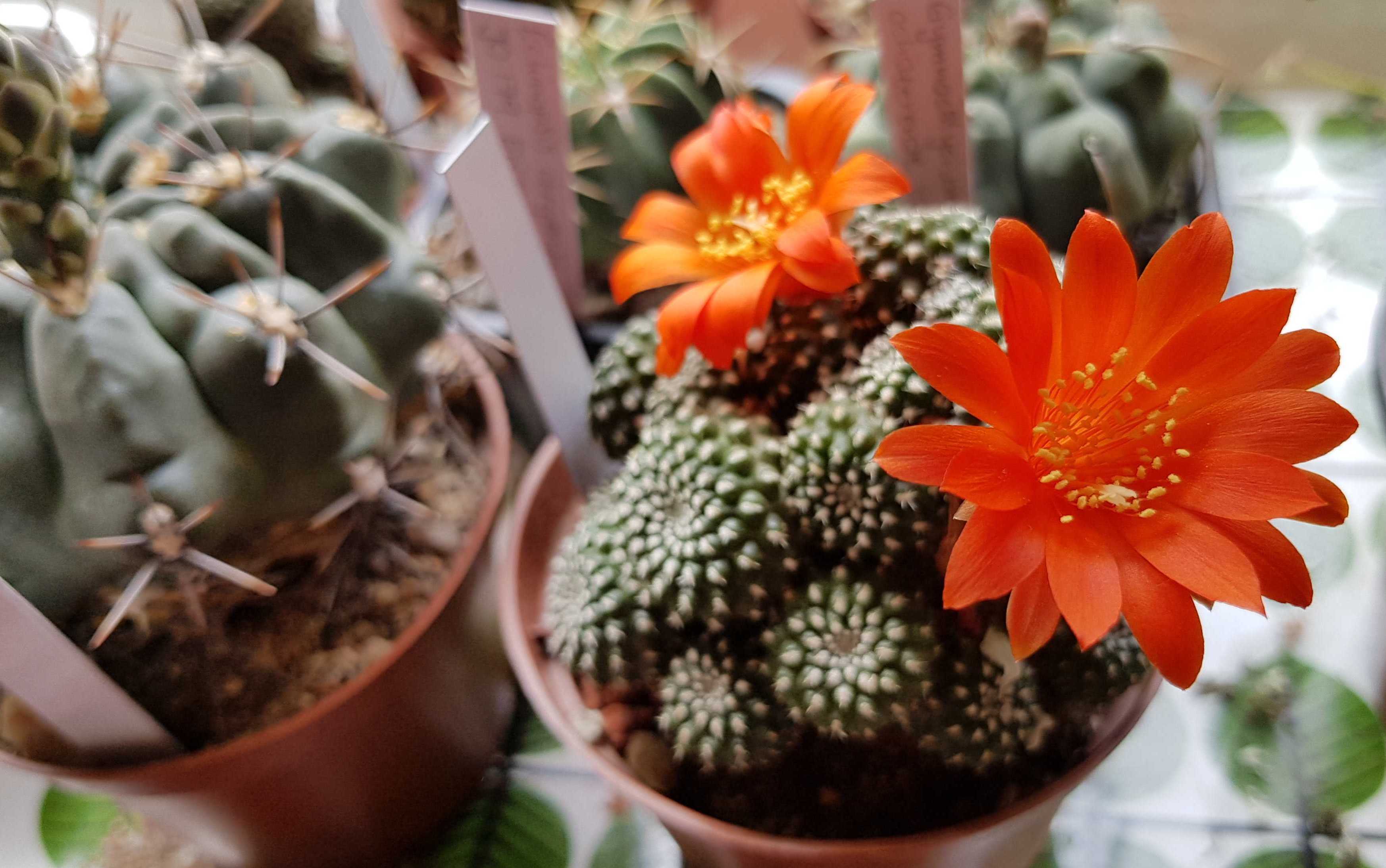How to repot your Cacti
Not sure if your cactus needs to be repotted?
The soil is very dense in structure and water absorbing, or dries to a dense root ball that is hard to rehydrate properly when watering
A lot of roots have started to grow out of the drainage holes in the bottom
Many new plantlets has grown from the base and the plant as a whole is now as wide or wider than the diameter of the pot

Three options to consider when repotting
Use a bigger pot
Good for plants that grow a lot and where the current pot has started to inhibit its growth.
Same pot, new soil
For plants that you don’t want to get any bigger.
Recommended soil

This is how you repot your Cacti
Water it a little Water your cactus to loosen up the soil from the pot.
Protect the plant and yourself during the repotting Use a piece of burlap, other textile or a piece of clothing you can spare and carefully wrap it around the cactus. This will help you hold the cactus during the repotting without hurting yourself. You can also use garden gloves for extra protection from the spines.
Remove the pot Gently take hold of the plant and start to loosen the pot, avoiding pulling on the stem or any branches. If it’s hard to get the pot to come off, try to cut the soil loose from the edges of the pot with a small knife. It doesn't have to be sharp. You can also gently tap on the outside of the pot with a tool or on the bench to help it loosen better.
Check the roots Do a root control and remove anything that looks dead, moldy, dried up or rotten. If both the soil and the roots look healthy, avoid touching the root ball, as it causes stress to the cactus. If you’re using the same pot again and want to change to a better suited soil mix, gently shake the soil off from the plant. If planted in peat soil this might be hard, and rinsing the roots in water might help removing old soil better.
Choose the pot When picking out a new pot, think about using one that’s only slightly bigger than the last one. Up to about 1” bigger for smaller plants, and 2” larger for bigger ones is a good rule of thumb. If you pick a pot that's too large, there's a risk that the new soil won’t be able to dry up quickly enough in between waterings, which might cause your cactus to get overwatered and rot.
Clean the pot (optional) By making sure the pot is free from old soil and is washed and clean you can prevent some pests and problems to appear on your plant. This is especially important if you've had issues with pests previously.
Pour soil in the bottom of the pot Add soil to the bottom of the pot. Make sure that you put down the right amount - the surface of the root ball should be placed slightly under the edge of the pot - if you place it too high your pot will overflow when watering. Avoid planting your cactus deeper than before. This will increase the risk of rot.
Put down the plant Place the plant on the soil and check that it’s centered before you start adding more soil.
Add soil Add soil around the plant: gently tap it with your fingers to make it firm and check that your plant is not planted deeper than it was before.
Water Water the cactus a little. If your cactus was watered close to the repotting or the roots where rinsed during the repotting you might skip this step and just stick to the schedule instead.
More soil? Sometimes you need to add a little more soil after watering the plant. Make sure that your plant has enough soil around its roots before you are done.
After repotting
Repotting can be stressful for cacti. It can take about one month before your plant is fully recovered and can start to enjoy the new and improved conditions for the roots.
During this period make sure to
Place the plant in a bright and sunny spot
Water it and stick to the schedule if possible. Follow the instructions in Planta to get it right.
Don’t feed it in the nearest month. The new soil has some plant food added and adding more can harm the already stressed roots.